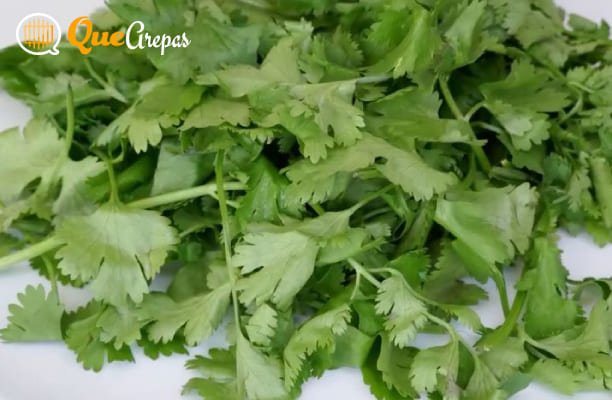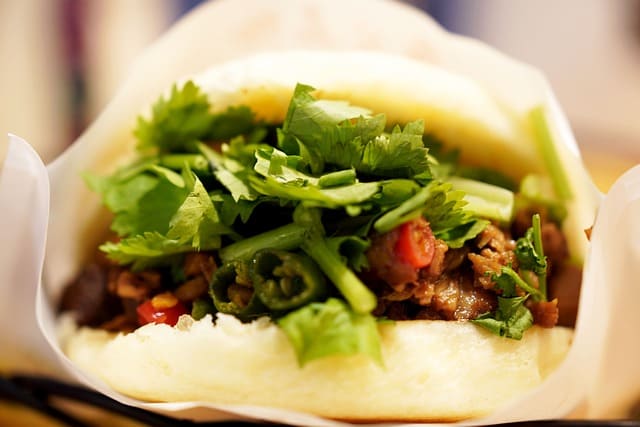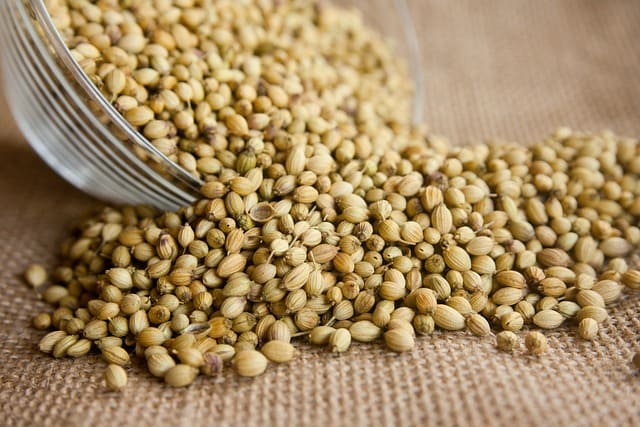Cilantro What is it? Properties - Benefits - Uses

Cilantro, also known as coriander, coriander or Chinese parsley, an annual herb that grows up to half a meter tall and has hairy stems with small white flowers that look like four watches.
It is an herb that has been used in kitchens around the world for thousands of years. It has a characteristic flavor and aroma, which can be described as citrusy or minty.
What is Cilantro?
It is an annual herb that grows up to one meter tall and has hairy stems with small white flowers that look like four watches (Mirabilis jalapa). The leaves are pale green and grow in pairs along the stems. The leaves are edible, but have a strong flavor, so they are often removed before cooking or consumed sparingly.
Coriander is a plant that grows from seeds and can be eaten raw or cooked. It is an annual herb that has been used since at least the 18th century BC. It is a delicious garnish for rice, tacos, salads and other foods.
It is a leafy herb commonly used in Mexican and Southwestern cuisine. The leaves can be used fresh or dried, and the whole herb can be added to dishes for both flavor and freshness. While the herb is predominantly used as a garnish, it can also be used as an ingredient in sauces, salsa and even as a tea.
Does a Maracucho arepa make you want to eat it?
Characteristics of Cilantro
It is rich in vitamin A and vitamin C, as well as iron and calcium. The herb has been shown to be an antibacterial and anti-diabetic agent, and has also been shown to improve inflammation in the body. Overall, cilantro is an essential part of many diets around the world, and is increasingly becoming a popular Whole Foods product.
The word "cilantro" comes from Spanish and refers to both the leaves and seeds of the plant. Cilantro leaves are bright green, while the seeds are a more golden color.
Properties of Cilantro
Cilantro is a favorite herb for many residents of Mexico and the southwestern United States. It has a distinctive flavor and is often used as a garnish or added to salsa and other dishes.
But did you know that it has many more medicinal properties than just flavor?
- It is an excellent source of vitamin A, which helps improve vision and prevent night blindness.
- It also contains vitamin C and folic acid, which are responsible for preventing the development of cataracts and depression, respectively.
- In addition, it is rich in antioxidants and xanthine, which help prevent blood vessel damage and prostate enlargement, respectively. Overall, there is no doubt that cilantro is a valuable addition to any healthy diet!
- Its properties are largely due to its oils and essential oils. These oils give the herb its characteristic flavor, in addition to having antifungal properties that may help prevent heart disease and cancerous tumors by inhibiting the growth of cancer cells in organs such as the liver or colon.
- Cilantro contains various minerals, as well as vitamin K. These nutrients are believed to have anti-inflammatory properties that may help protect against cancer and cardiovascular disease.
Coriander is used in traditional medicine to treat digestive and gastrointestinal problems. The leaves are also often used to treat colds and headaches.
Would you like an Arepa Reina Pepiada?
Uses in the kitchen
- Cilantro is a versatile ingredient that can be used in a variety of dishes.
- It can be used as a garnish, in soups and stews, or as a substitute for fresh basil.
- It can also be added to rice dishes to give them a flavorful pop. For example, adding to fried rice gives the dish a fresh, deep flavor.
- It can be used in marinades and stir-fried dishes. When used as a marinade, it allows the meat to absorb the flavors of the ingredients while keeping it well seasoned.
- It is often used to garnish drinks, such as margaritas and Corona con el fin del mundo. By adding a touch of cilantro to your favorite beverage, you can create a refreshing and unique drink that is sure to please.
- In addition to use in cooking, it can be used as a garnish for salads, tacos and other dishes. Whether you are using cilantro as a condiment or garnish, you will be sure to enjoy the flavors of this versatile herb.
- In Mexico, it is often added to salsa or guacamole.
- In India, it is often used in recipes for tandoori chicken and other meat dishes.
- It can be used to season rice and other grains.
- It can add a bright touch to salads and soups, especially when combined with other herbs such as mint or basil.
It is a popular herb that can be used in a wide variety of dishes. It has a very distinctive flavor, so it is important to use it sparingly in cooking.

Cilantro Recipes
Carrot Arepas with corn flour and cilantro
How to consume to obtain its benefits?
- The leaves are used in many cuisines around the world.
- In some places they are served fresh; in others, dried or frozen for later use.
- The seeds are also edible and are used as a spice called seed or seed powder (also known as Chinese parsley).
- It can be added to almost any dish to give it an extra kick of flavor. Its unmistakable flavor makes it an ideal addition to soups, salads and even tacos.
- In addition to cooking, coriander oil is often used in aromatherapy for its relaxing effects on the mind and body.

A bit of history
Coriander has long been used in traditional medicine in Asia, Europe, Africa and Latin America for its numerous health benefits. Among other things, it helps fight indigestion, relieves headaches caused by stress and improves circulation by opening blood vessels in the skin.
It has been used for thousands of years in India, China and Mexico, where it originated as an ingredient in their traditional dishes. Explorers brought coriander to Europe and discovered that it also grew wild there.
The leaves are green, but have a bright, citrusy flavor that makes them a great addition to dishes like guacamole and salsa. They are often used in Mexican dishes, but are also found in cuisines around the world.
You can continue to see Venezuelan arepas, Colombian arepas or go to arepas recipes in quearepas
Frequently Asked Questions
Does cilantro have a strong flavor?
Its flavor can vary from person to person. Some people describe its flavor as fresh, clean and herbaceous, while others find it strong and pungent. Overall, cilantro has a distinctive and pleasant flavor that is widely used in cooking.
Is cilantro easy to grow?
Yes, it is an easy herb to grow at home. It requires partial sun exposure and well-drained soil. It can be planted in a pot or in the garden and it is recommended to keep the soil moist but not soggy.
Is there any way to substitute cilantro in recipes?
If you do not like the taste of cilantro or if you do not have it on hand, you can substitute it with other herbs such as parsley, mint, basil, among others. However, keep in mind that each herb has its own distinctive flavor, so the substitution may change the flavor of the dish.
If you want to know other articles similar to Cilantro What is it? Properties - Benefits - Uses you can visit the category ingredients.

